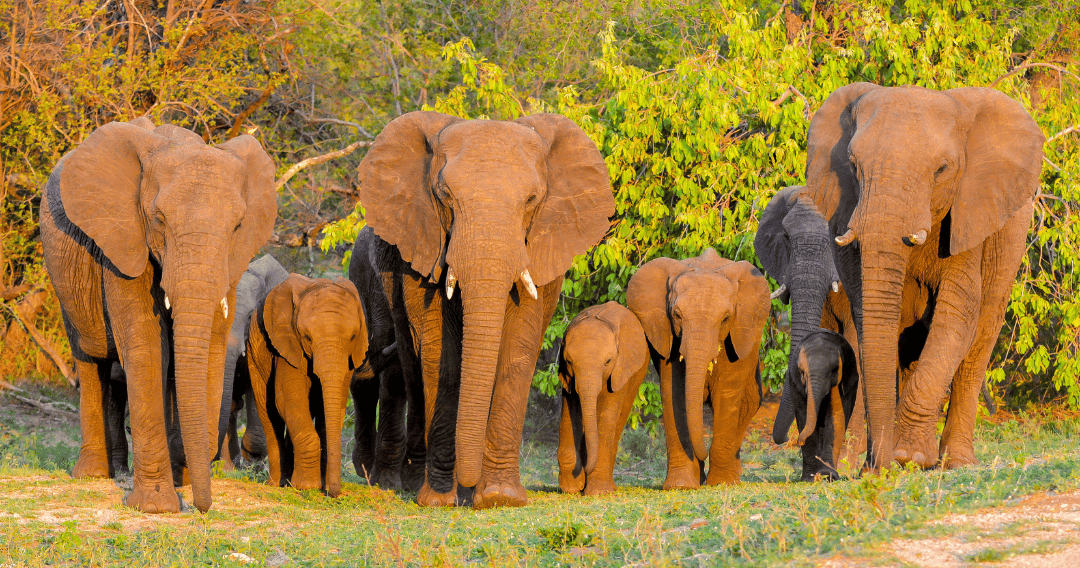Frequently Asked Questions


Where does the donation money go?
Every donation to Elephants in Bloom directly supports our mission of protecting elephants while empowering Maasai farmers. Your contributions fund the essential components that make this project successful:
Sunflower Seeds: We purchase high-quality sunflower seeds for distribution to participating farmers. These seeds are the foundation of the entire project—without them, farmers cannot plant the protective borders around their crops.
Farmer Training Programs: Donations fund hands-on workshops and training sessions that teach farmers how to plant, maintain, and harvest their sunflower borders effectively. This education ensures the borders work properly and helps farmers maximize the economic benefits from their sunflower crops, including seed sales and beekeeping opportunities.
Curriculum Development for Children: We're investing in the next generation by creating educational programs for school-age children in the Maasai Mara. These future farmers are learning about coexistence with wildlife, sustainable farming practices, and conservation from an early age, ensuring the long-term success of harmonious human-elephant relationships.
Transportation: The Maasai Mara's rugged terrain requires a reliable 4-wheel drive vehicle to reach remote farms, deliver seeds, conduct training sessions, and monitor the project's progress. Your donations help maintain and fuel this essential transportation.
Local Leadership: Stephen, our local coordinator and director, lives and works in the community. His salary is funded by donations, and his role is crucial—he coordinates project activities, builds relationships with farmers, oversees training, and ensures the project runs smoothly year-round. Supporting local leadership means the project is truly community-driven and sustainable.
We are committed to transparency and ensuring that your generosity creates real, measurable impact for both the Maasai farming community and the elephants of the Maasai Mara.
Why do elephants avoid sunflowers?
Elephants avoid sunflowers for several reasons, making them an effective natural barrier for crop protection:
Texture and Physical Discomfort: Sunflowers have rough, hairy stems and leaves that elephants find unpleasant to touch. Elephants have sensitive skin, particularly around their trunks, and they dislike the scratchy, bristly texture of sunflower plants rubbing against them.
Height and Visual Barrier: Mature sunflowers can grow 8-12 feet tall (or even taller), creating a dense visual barrier. Elephants are cautious animals and generally avoid walking through vegetation they cannot see over or through clearly, as it may conceal threats or obstacles.
Smell: Some research suggests that elephants may also dislike the scent of sunflowers, though this is less documented than the texture issue. Elephants have an extremely keen sense of smell and use it to evaluate their environment, so certain plant odors may naturally deter them.
Lack of Food Value: Unlike crops such as maize, vegetables, or other cultivated plants that elephants find appealing to eat, sunflowers don't offer the kind of nutritious, tasty food that would motivate elephants to push through an uncomfortable barrier to reach.
Learned Behavior: Once elephants encounter a sunflower border and find it unpleasant, they remember the experience. Elephants have excellent memories and will typically avoid areas they associate with discomfort, choosing easier paths instead.
The combination of these factors makes sunflowers an ideal natural deterrent—they create an uncomfortable, uninviting barrier that elephants simply choose to walk around rather than push through. This protects the crops inside without harming the elephants in any way..
How does a sunflower border protect crops?
A sunflower border works as a natural, living fence that deters elephants from entering farm fields and raiding crops. Here's how it protects the farmers' harvests:
Creating a Physical Barrier: Farmers plant sunflowers in dense rows around the perimeter of their fields, typically 2-3 rows deep. When the sunflowers grow to their full height of 8-12 feet, they create a tall, thick wall of vegetation that surrounds the crops inside—such as maize, vegetables, and other food plants that elephants find attractive.
Deterring Entry: Because elephants dislike the rough, bristly texture of sunflower stems and leaves (particularly on their sensitive trunks), they avoid pushing through the sunflower border. The height also prevents them from seeing what's on the other side, making them hesitant to enter. Rather than force their way through an uncomfortable barrier, elephants typically choose to move on and look for easier food sources elsewhere.
Redirecting Elephant Movement: The sunflower border doesn't trap or harm elephants—it simply redirects their natural movement patterns. When elephants approach a farm at night (their typical raiding time) and encounter the sunflower wall, they go around it rather than through it. This keeps both the crops and the elephants safe.
Year-Round Protection: The sunflowers provide protection throughout the critical growing season when crops are most vulnerable to raiding. During harvest time, the farmers also harvest their sunflowers, which provides valuable seeds for sale, replanting, and for producing cooking oil. The cycle then repeats with the next planting season.
Multiple Layers of Defense: The border works best when maintained properly—keeping the sunflowers healthy and dense, ensuring there are no gaps that elephants could exploit, and replanting as needed. When farmers follow the guidelines we teach in our training programs, the success rate is remarkably high.
The beauty of this solution is its simplicity: sunflowers protect crops without using harmful methods like electric fences, poisoning, or shooting elephants. It's a win-win that allows farmers and wildlife to coexist peacefully.
Elephants in Bloom
Creating sustainable coexistence between Maasai people and elephants.
Kimberly Swedberg
info@elephantsinbloom.com
+01 573 979 5514 USA
© 2025. All rights reserved.
Stephen Nabaala
+254 716 136983 Kenya
info@elephantsinbloom.com
